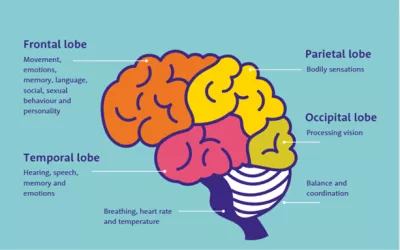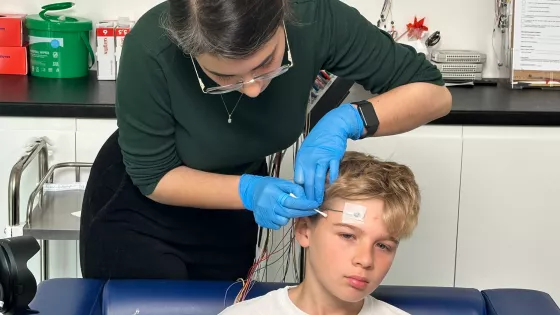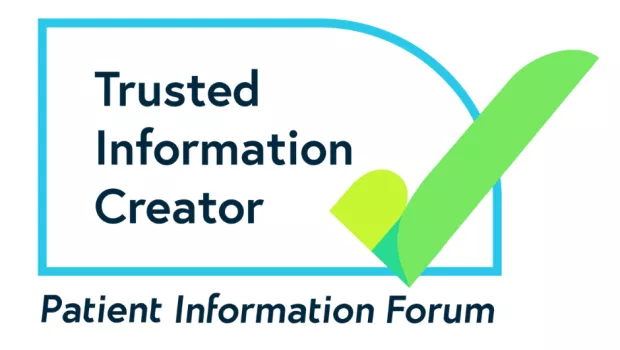There are many different types of seizures. This information is for people affected by or concerned about focal seizure types. On this page we tell you about the most common focal seizure types.


There are many different types of seizures. This information is for people affected by or concerned about focal seizure types. On this page we tell you about the most common focal seizure types.

Focal (or focal onset) seizures start in one part of the brain. But sometimes a focal seizure can start in one part and then spread to other parts of the brain. Doctors might describe this as focal that progresses to generalised seizures or focal to bilateral seizures.
What happens during a focal seizure will depend on where in the brain it happens, and which functions that part of the brain controls. Focal seizures can affect your movement and senses.
Sometimes, in focal seizures, your consciousness can be affected, where you have a reduced level of awareness (impaired awareness). At other times, you can be fully aware throughout.
Focal seizures can spread and affect the whole brain, resulting in a generalised seizure known as a ‘focal to bilateral tonic-clonic seizure’.
‘Lobe’ simply means ‘rounded or sticking-out area’. ‘Temporal’ comes from the Latin for time.
The temporal lobe in the brain controls smell, auditory perception (what we hear), language, feelings, emotion and memory. The temporal lobes are behind the ears and are the second-largest lobes. Temporal lobe epilepsy is the most common type of epilepsy to cause focal seizures and can start at any age.
In temporal lobe epilepsy, you may experience a sudden strange mix of feelings, emotions, or thoughts that you find difficult to describe. These may include a feeling of déjà vu (the sense that things have happened before), butterflies in the stomach, nausea and odd smells or tastes. These sensations may happen alone or may be a warning of more seizures that will affect your consciousness.
These seizures may cause unusual movements, such as lip-smacking, plucking at clothes, finger-fumbling, unusual speech or wandering off in a confused state.
They may also develop into tonic-clonic seizures (called ‘focal to bilateral tonic-clonic seizures’) and tend to be followed by confusion.
Frontal lobe epilepsy is the second most common type of focal epilepsy. The frontal lobes are a large area of the brain responsible for:
Frontal lobe seizures will vary depending on which part of the frontal lobes is affected. They usually start suddenly, end just as quickly, and often happen in clusters.
They may produce weakness in certain muscles, including those used to speak. They may also cause sudden movements in the limbs, such as the flinging out of an arm.
Frontal lobe seizures usually happen during sleep and can be quite dramatic as you may turn your head, frown, thrash around or make cycling movements with your legs.
When a frontal lobe seizure begins, there may be no symptoms until it spreads to other areas of the brain, or most of it, causing a tonic-clonic seizure.
Frontal lobe seizures can be incorrectly diagnosed as functional seizures, sometimes called dissociative seizures or ‘non-epileptic attack disorder’ (NEAD).
Functional seizures may look similar to epileptic seizures. They are periods of uncontrolled movements, sensations or behaviour that are not caused by abnormal electrical activity in the brain. When these seizures happen, the person has no control over them.
Find out more about functional seizures.
The parietal lobes are in the upper back area of the skull. They are responsible for:
Parietal lobe seizures are rare. They usually cause strange sensations and are also known as ‘sensory seizures’. These may include a tingling or warmth, often down one side of the body only.
Some people say their arms and legs feel bigger or smaller than usual, and areas of their body might go numb.
Parietal lobe epilepsy can be incorrectly diagnosed because the symptoms can be unusual and even show a normal EEG result during a seizure.
The occipital lobe is at the back of the brain. It’s responsible for processing what you see and recognising shapes and colours.
Occipital lobe seizures are less common than other focal onset seizures. The seizures affect your sight, and the symptoms include:
Partial blindness may also occur, and severe headaches often happen during or after a seizure.
Occipital lobe epilepsy is often mistaken for migraines, because of the severe headaches and related symptoms affecting your sight. Occipital lobe epilepsy can also spread to the temporal or frontal lobes, also making it hard to recognise because the characteristics of the seizure change.
Gelastic and dacrystic seizures start in the hypothalamus. The hypothalamus is at the bottom end of the brain. These seizures are linked with appearing to have uncontrollable emotions such as laughing or crying, but they have no control over it. When people have these seizures, they are usually aware of what’s going on around them.
Gelastic seizures are often called laughing seizures. This is because people tend to have episodes of uncontrolled laughing or giggling when they have these seizures. The person may look like they are smiling or grinning.
Although they may appear to be laughing, most people don’t feel happy during a gelastic seizure. They may feel scared or a loss of control.
With dacrystic seizures, the person makes a crying sound. And they may also look like they are grimacing.
Gelastic and dacrystic seizures may be missed and not be picked up as seizures for a long time because of the way they look. People don’t expect someone to laugh or cry during a seizure. These seizures often start in infancy.
You told us what really helps when you're having a seizure, and we listened. This guidance is shaped by a powerful mix of lived experience and clinically informed expert advice, coming together to help others know what to do.
To help someone who is having a focal aware seizure, follow these steps:
Call an ambulance if:
The person may have an emergency management or care plan. If they do, you should follow the instructions in their plan. Their plan may include giving them their prescribed emergency medication, but do not administer emergency medication unless you are trained to do so. If you have to call 999, stay on the line and follow the guidance of the call handler.
You told us what really helps when you're having a seizure, and we listened. This guidance is shaped by a powerful mix of lived experience and clinically informed expert advice, coming together to help others know what to do.
To help someone who is having a focal awareness impaired seizure, follow these steps:
Call an ambulance if:
The person may have an emergency management or care plan. If they do, you should follow the instructions in their plan. Their plan may include giving them their prescribed emergency medication, but do not administer emergency medication unless you are trained to do so. If you have to call 999, stay on the line and follow the guidance of the call handler.
Last reviewed July 2025.
Next review due July 2028.
If you would like to find out more about how we produce our information, or the sources of evidence we use, please contact us at healthinfo@youngepilepsy.org.uk
Discover what an epileptic seizure is, how to identify a seizure in babies and infants, and about non-epileptic seizures and episodes.
Learn about the differences between focal and generalised seizures and how to identify each.
Learn about generalised onset seizures, their types, causes, and management. Find resources and support for children and young people with epilepsy.

Get guidance on how to help someone having a seizure, including when to call an ambulance and helping babies and infants.
Learn about common seizure triggers in children and young people, including poor sleep, missed medication, and flickering lights.
Learn about status epilepticus, prolonged seizures, and emergency medication for managing seizures lasting more than five minutes.
Young Epilepsy’s information about nocturnal seizure monitors and other equipment, apps and services for parents of children with epilepsy.
Learn about the causes of epilepsy, including genetic, metabolic, unknown origins, and epilepsy in infants, from Young Epilepsy.
Learn about common childhood and rare infancy epilepsy syndromes in this informative guide from Young Epilepsy.
Understand epileptic seizures, their types, causes, and management. Find resources and support for living with epilepsy.
Find out how epilepsy is diagnosed, what to expect at your first appointment, and how to get the right support for children and young people.
Explore various epilepsy treatments, including medication, surgery, and dietary options. Find resources and support for managing epilepsy effectively.
Explore common co-occurring conditions like autism, ADHD and dyspraxia in children with epilepsy, and how to recognise and support them early.
Learn about SUDEP, who is at risk, and how to reduce the chances of epilepsy-related death in children and young people through safety and support.

Young Epilepsy is a certified member the PIF TICK scheme. The scheme is the only independently assessed certification for both print and digital health information.